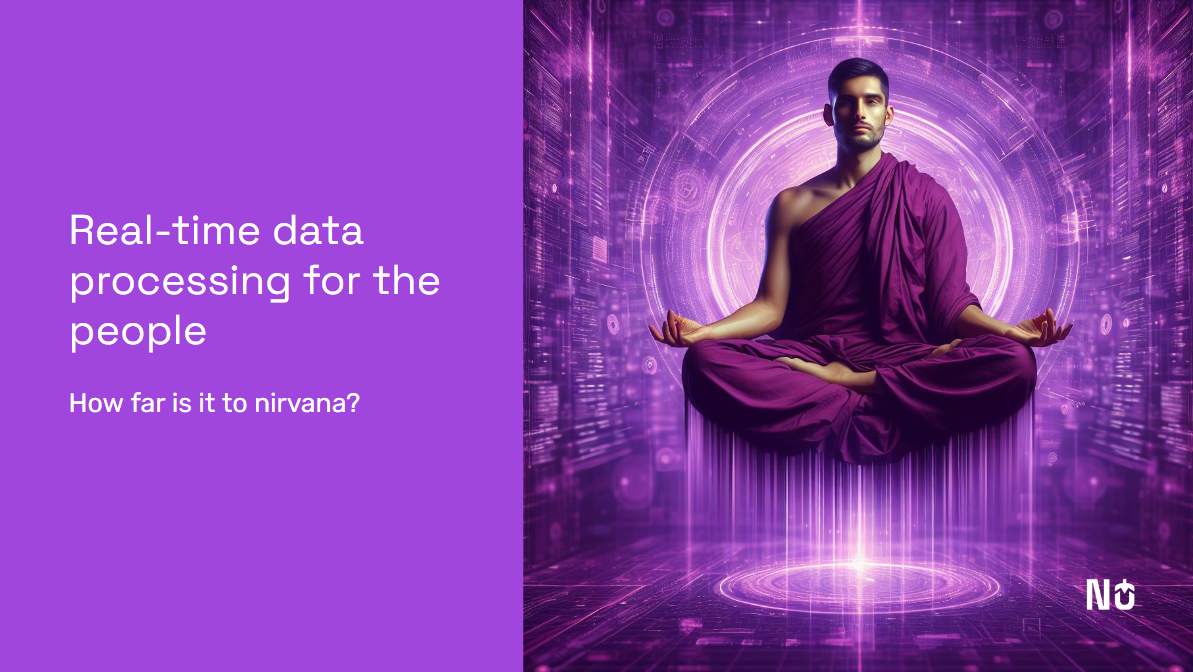Can domain experts be so happy with a tool that the experience can be likened to nirvana? This provocative question is intended to start a discussion about the features needed to make real-time data products accessible to ordinary (non-technical) people. Zbigniew Małachowski presents his own list of required features. But are they enough to trigger nirvana-like relief?
Webinar video: Real-time data processing for the people
Abstract:
Acting on data in real time, such as fraud detection, next best action, streaming ML, clickstream analysis, IoT sensor analysis, etc., requires algorithms that are rarely trivial enough to be created with no code: just drag and drop.
In the streaming world, the reason why domain experts find themselves forced to go into deep technical details of Kafka, Flink, Spark, REST, etc is that while many platforms are quite successful in abstracting Kafka, Flink, Spark, etc, they are just simple visual overlays on the (streaming) SQL and do not allow for much more.
There needs to be more to author a serious actions-on-data algorithm.
What features are needed for these tools to truly succeed?
Nussknacker application in Data Lakehouse architecture: Apache Iceberg example
Nussknacker now supports Flink catalogs. This means you can use it with Apache Iceberg for tasks like data ingestion, transformation, aggregation, enrichment, and creating business logic. This blog post will show you how to use Nussknacker and Apache Iceberg together for a real-world example
ML models inference in fraud detection
How to simplify the integration of ML models into business applications, automate many of the technical complexities, and support advanced techniques like A/B testing and ensemble models. A fraud detection example
Next Best Action recommendation management simplified
Business scenarios can become increasingly complex, causing many problems for users and administrators. Read how we tackle the problem in the Request Response processing example
Nussknacker
Business users can create or change decisioninig algorithmss anytime, without any assistance from IT department.
Contact us
We can help you customise and extend Nussknacker to meet your specific needs and then deploy and maintain it on your infrastructure.
